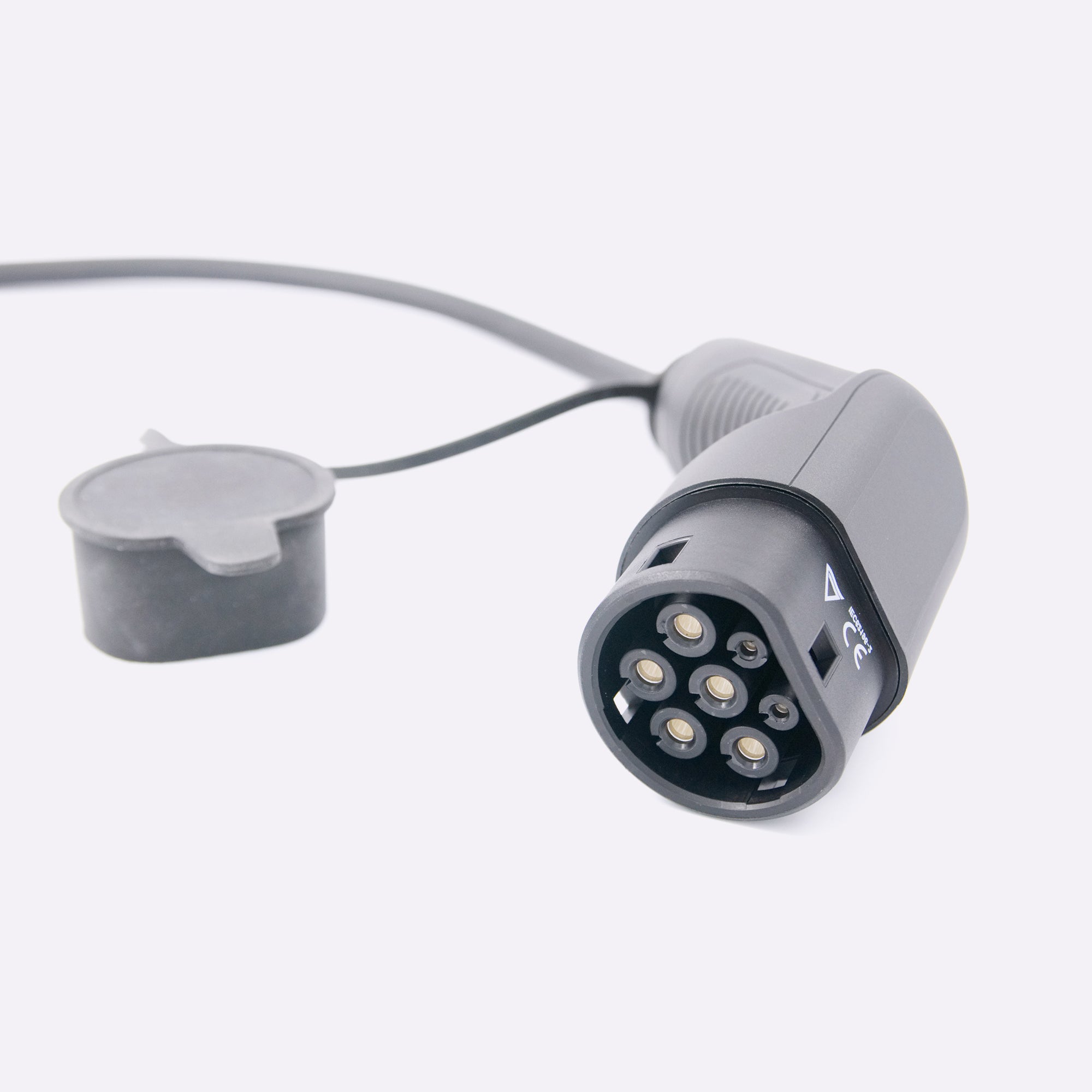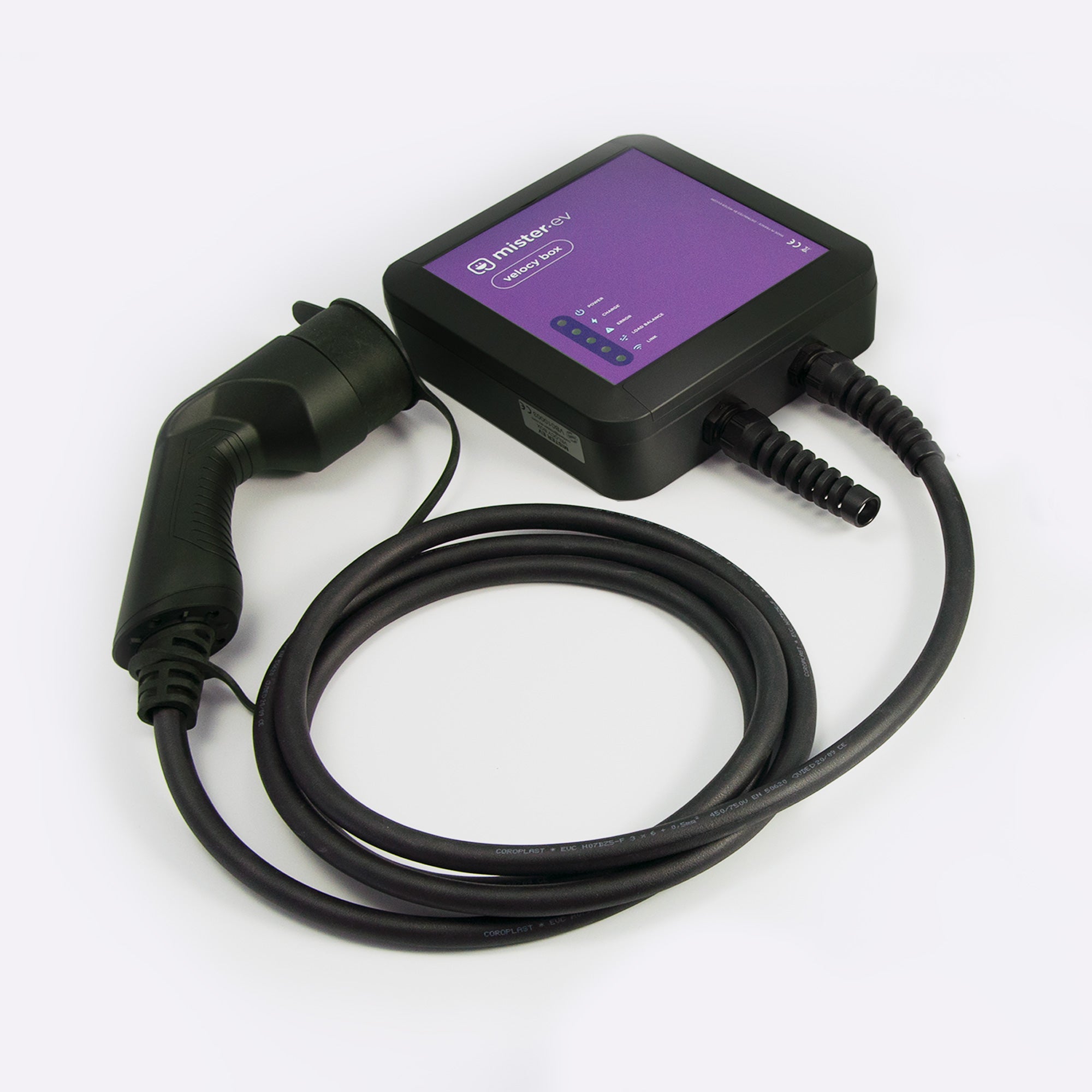Whether you're renewing your vehicle at the end of a leasing contract, or changing it for any other reason, you'll probably want to know whether your charging equipment will remain compatible with your new electric vehicle or plug-in hybrid. In this article, we'll explore the key factors you need to consider to ensure that your charging infrastructure remains suitable for your new electric vehicle.
1. Connector compatibility
One of the most important aspects to check when switching to a new electric vehicle is the compatibility of the charging connectors. Electric vehicles are equipped with different charging sockets, and not all of them are identical. Type 2 and Type 2 with integrated Combo CCS are the main connectors found on the automotive market.

When you plan to change your electric vehicle, make sure that the charging connector on your charging cable is compatible with the one on your new vehicle. If it isn't, you'll need to get a new, compatible charging cable. You can consult our Vehicles section to check the connector type of your new vehicle.
2. Charging power
Another key factor to consider is the charging capacity of your charge point. Modern electric vehicles are equipped with different charging capacities, ranging from 3 kW to 22 kW AC. Make sure that the charging capacity of your infrastructure matches that of your new vehicle. If your charging station is obsolete, you may need to consider upgrading to take advantage of faster charging times.
Before you decide to change your charging station, make sure that your electrical installation allows you to charge faster:
- If your electrical installation is single-phase: the maximum charging power will be limited to 7.4 kW.
- If your electrical installation is three-phase: the maximum charging power can reach 22 kW (32A).
| Maximum power delivered | |
| Domestic socket | 2,4 kW |
| Green'up socket | 3,7 kW |
| P17 16A single-phase socket | 3,7 kW |
| P17 32A single-phase socket | 7,4 kW |
| P17 16A three-phase socket | 11 kW |
| P17 32A three-phase socket | 22 kW |
| Single-phase chargepoint | From 2,3 kW to 7,4 kW |
| Three-phase chargepoint | From 2,3 kW to 22 KW |
Recharging capacity for France
It may be a good idea to keep your existing chargepoint, and use it for slower charging, at night (7 hours), for instance, even though the vehicle’s more powerful on-board charger will not accelerate charging in this situation.
3. Electricity subscription
QWhether you have a single-phase or three-phase electrical installation, your electricity contract will determine the maximum power delivered. Make sure you have the right contract for your charging needs, and that you can afford it.
There's no need to change your single-phase installation for three-phase. The gain in charging speed is sometimes too small in relation to the cost of the work required.
To sum up, if you have a single-phase installation and a single-phase 7.4 kW chargepoint, there's no need to change your installation or chargepoint for your new vehicle.
If your electrical installation is three-phase and you had a single-phase chargepoint to charge your old car, a three-phase chargepoint could allow you to take more advantage of the new electric vehicles on the market.
4. Compatibility with public charging stations
As well as your home charging station, it's also essential to check that your new vehicle is compatible with public charging stations. Make sure that the chargepoints available in your area are compatible with your new electric vehicle. In addition, find out which charging networks are available on your daily route or for longer journeys.

5. Servicing and maintenance
Finally, consider the upkeep and maintenance of your charging infrastructure. Like all electronic equipment, charging stations may require software updates or configurations to increase charging power. Make sure the manufacturer of your charging station supports your specific model and offers reliable customer service.
💡 Do you have a Mister EV Velocy Box charging station? Follow the instructions in the manual to set the charging power delivered if this was lower by default for your old vehicle
To conclude, when you're thinking of changing your electric vehicle, it's essential to consider the compatibility of your existing charging option with your new model. By taking into account factors such as connectors, charging power, management software, compatibility with public charging stations and maintenance, your transition to a new electric vehicle will run smoothly, without a doubt, any hassle or unexpected surprises. With the right charging infrastructure, you can continue to make the most of electric mobility in the best possible conditions.












Leave a comment